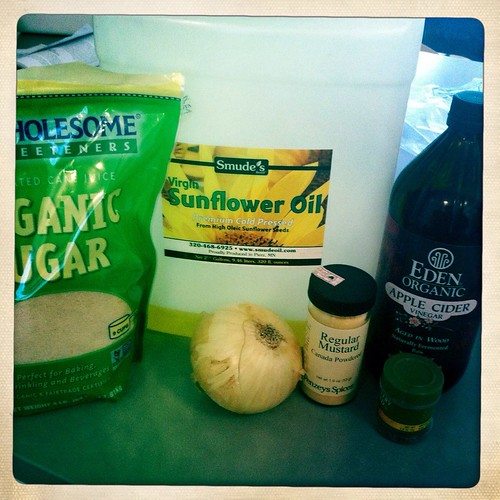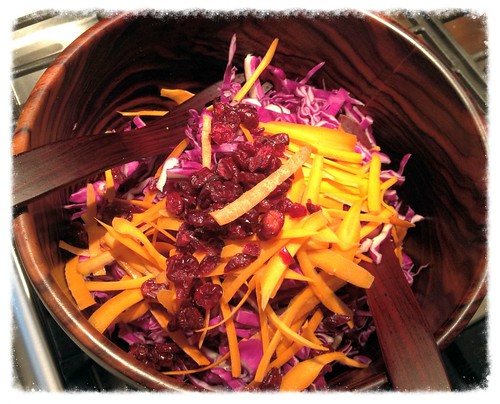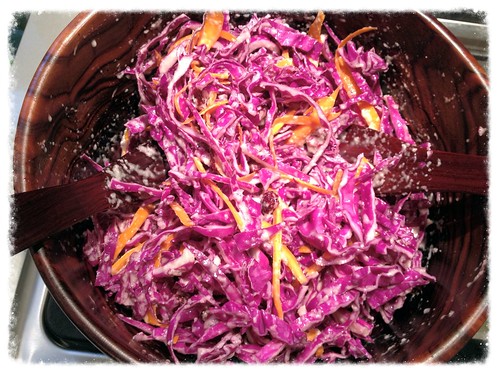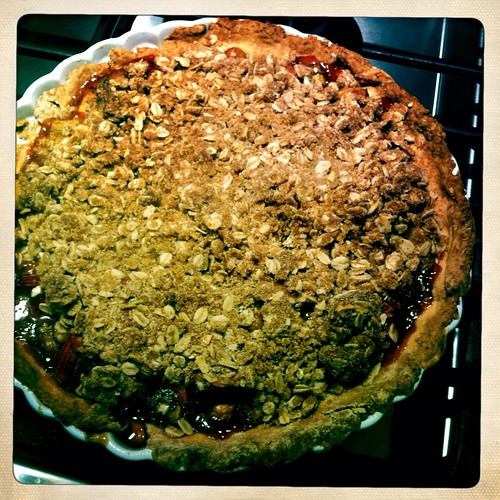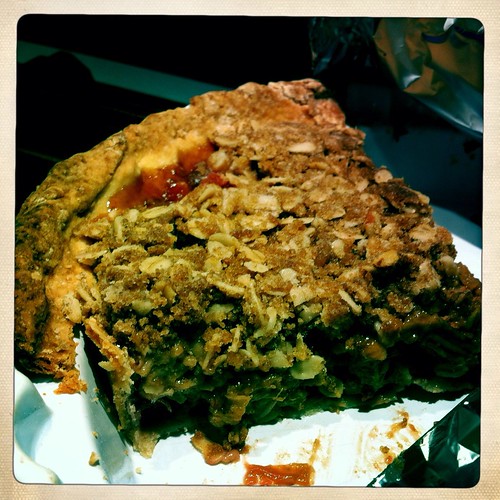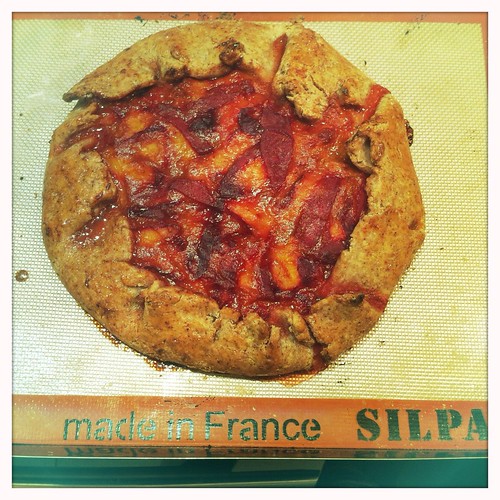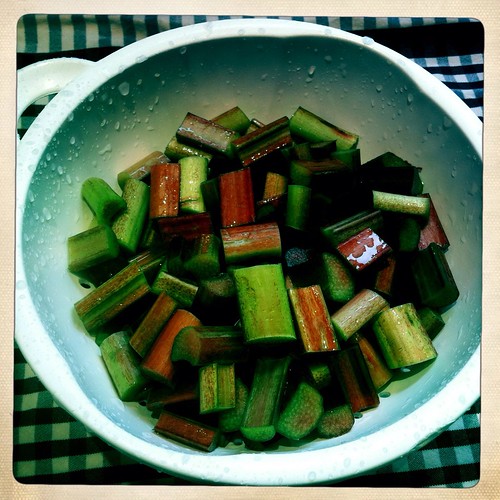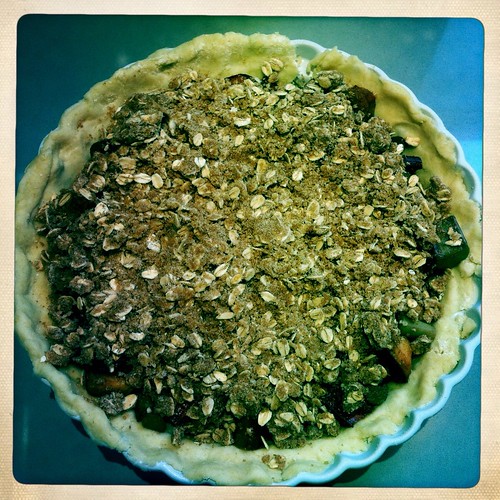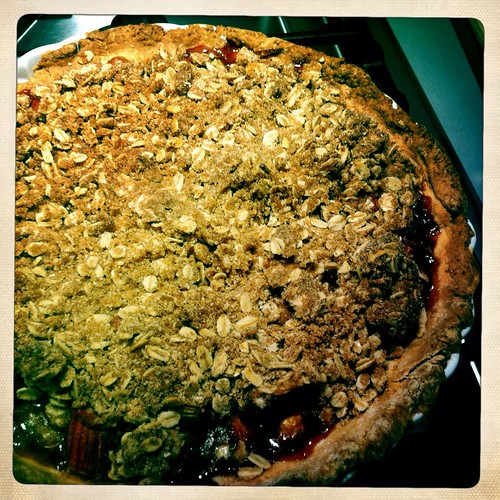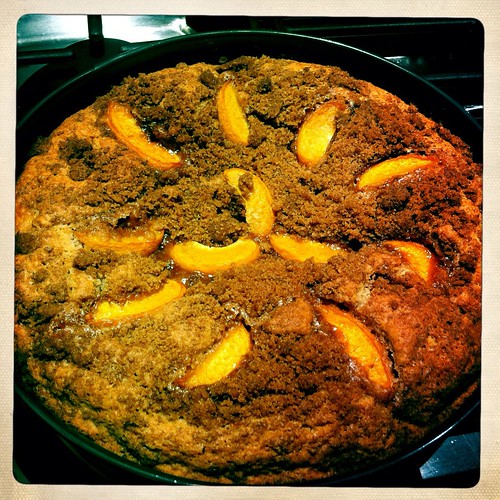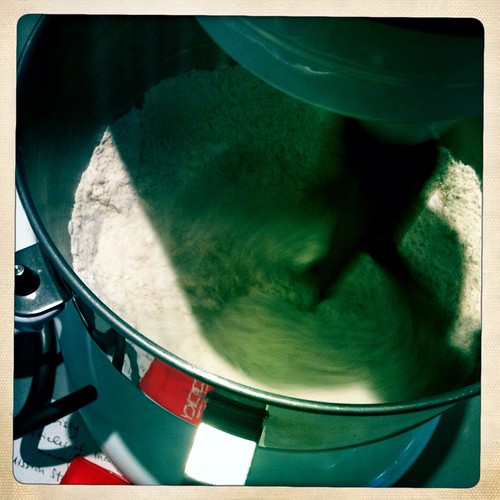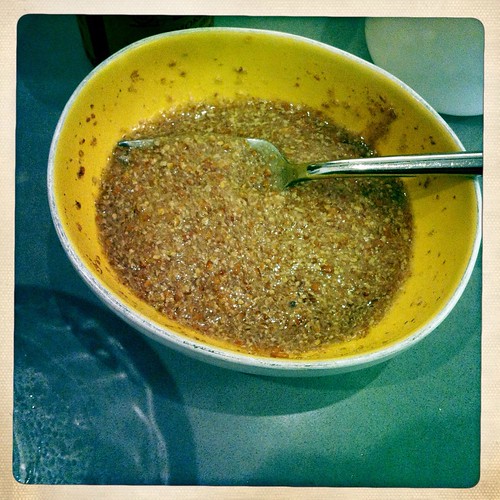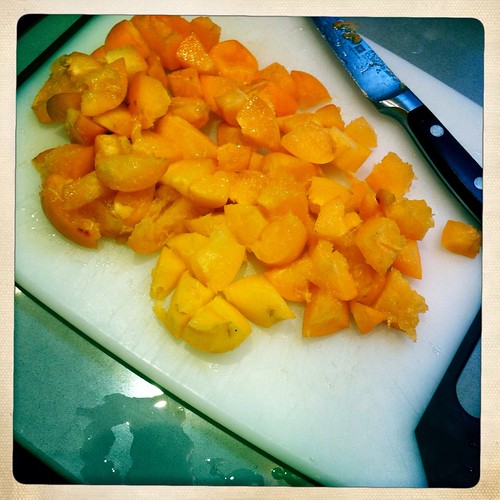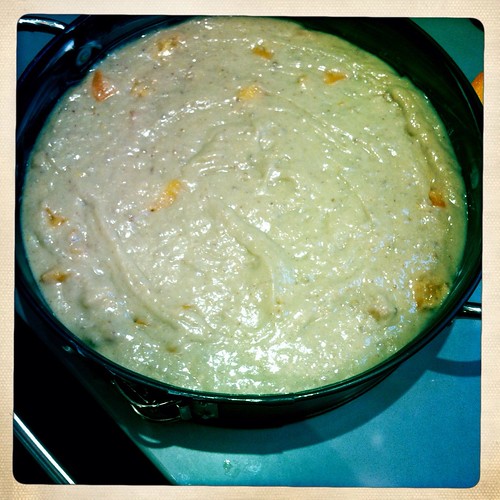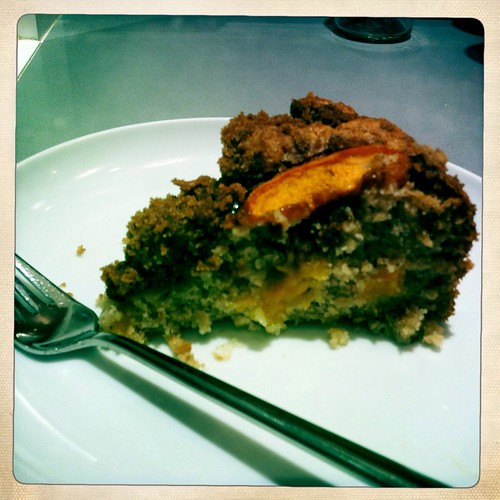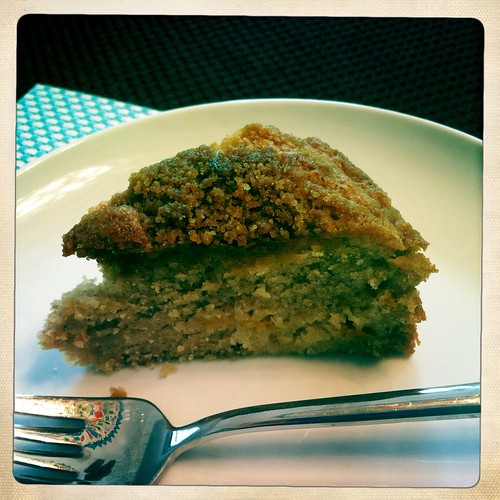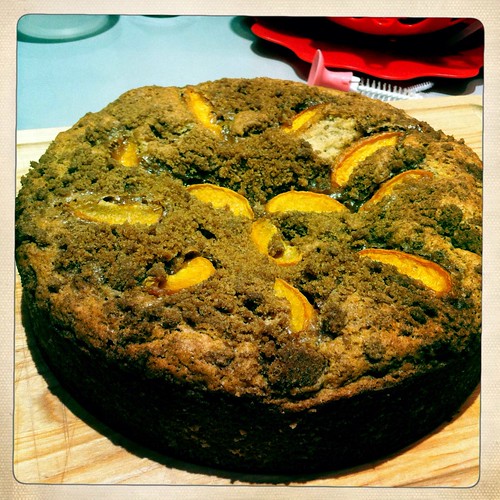I am so out of practice. Lost my voice a bit, if you will. I have so many recipes to share with you though so I want to just dive in and not care too much about all the areas in which I fall short. (Like - am I seriously still using Hipstamatic to photographically document all my food? And grammar? What is grammar? I do not know what that word means.) Anyway, I have a few things to tell you NOW and the first is this:
I can't stop eating this cake. Did you hear that? CAKE. Like the good old days! CAKE!!! BUT FOR THE WHOLE FAMILY.
I'm just going to ramble like a madwoman for a while now because I am so excited and pleased with how this turned out and, if you lived nearer, I'd invite you to check out my girthy waistline to prove it. Because, in case you missed previous paragraph, I can't stop eating this cake.
So, obviously, this cake is pretty tasty, or else it won't be quite so irresistible. And it's summery (apricots!) and versatile (good for dessert AND breakfast!) and fairly attractive (sliced fruit: works every time!), particularly given all the obstacles it faced coming into existence.
Obstacles? you might wonder. What do you mean, exactly?
Well, friends, the obstacles are called "dietary restrictions". You see, cake is traditionally made with flour, eggs, and butter. These three ingredients, along with varying amounts of baking powder, sugar or sweetener of some sort, spices, fruit, chocolate, nuts, what have you, are the fundamental ingredients for pretty much every cake you've ever had in your entire life. They are fabulously popular ingredients because they are reliable and yummy and when you mix them up and put them in the oven they transform from batter to moist, crumby perfection. For some reason, and I suggest that the reason is a global addiction to and glorification of all things sweet and crumbly, we hypoallergenic preparers of food always get a little surprised, sad, and frustrated when we don't end up quite making "cake" out of a bunch of ingredients that do not include flour, eggs, and butter. This is sometimes amusing to me, as I wouldn't ever try to make carnitas out of apples and then be surprised, sad, and frustrated that it didn't work. And I definitely wouldn't give it a second go. Yet. I bake a lot. Sans flour, eggs, and butter. I fail often, but my success-to-failure ratio is improving all the time, and now, not only do I have some reliable recipes for brownies, a few kinds of cookies, several muffins and quick breads, pancakes, and cupcakes, but I also can improvise a bit - something I historically haven't felt comfortable doing with the allergen-free baking. Despite said progress, cake has been particularly daunting, because, well, cakes are hard. Even when you use the ingredients typically found in cake. (Ask Nicole. She's been with me the whole way.)
This cake is BECKETT SAFE. In case you are not as on top of my family's allergies, this means it is gluten-free (we can't do wheat or barley) and vegan (no eggs or milk). There are no nuts or chickpeas in it (you might think nuts and chickpeas are easy enough to avoid, but they make frequent appearances in gluten free flour blends so we have to be picky about what flour and starch combos we use, and we're deprived of some of the more flavorful ones). Because I've got allergies and food is always on my mind and my goal is to make treats for everyone who might come round to enjoy, these are also soy free for one of my besties and her allergic baby. Woo hoo!
A few notes before you dive into making this badboy:
1. If you're not using eggs OR wheat, you pretty much have to accept that you aren't going to end up with a light, airy baked good. C'est la vie. This cake is moist and dense in a decidedly coffee cake way. Both the batter and the finished baked good are more reminiscent of a muffin or banana bread in texture than of a Betty Crocker yellow cake. Allow to cool for at least an hour for best texture.
Day 1, not quite cooled because we were super eager:
Day 3, still super moist and much more sliceable:
2. You can use a mixer or a wooden spoon or whatever. I highly recommend using a spring form pan for easy removal of cake. If you use a regular round cake pan (9" minimum) or Bundt cake pan, I suggest putting the crumb topping in the middle of the cake, like a streusel filling, if you don't want any of those crumbs to go to waste. If you want the crumb topping but don't have a spring form pan, I suggest using a 11-X-7" or 9" square pan and serving it directly from the pan in squares.
3. Theoretically, you could use 2 eggs in place of flaxseed mixture and/or three cups of any gluten free all-purpose baking mix that you know and trust in place of brown rice flour and starches. I have tried neither of these substitutions, however, so cannot vouch for their workability.
4. You could increase the sugar by up to 1/2 cup if you'd like, particularly if you're using apricots or another semi-tart fruit (e.g., shredded granny smith apples, raspberries, blackberries). I felt the lesser amount of sugar was fine since it had the brown sugary topping, and I didn't want to feel super guilty about giving this to my children for breakfast. That said, my recipe as written does not produce a terribly sweet cake.
5. This cake comes together quickly and has lasted beautifully in an air-tight container on my counter for four days. It's texture improves as it cools - it doesn't dry out, it just firms up, becoming less crumbly. The flavors also get better rather than worse - the blend of flours and starches I used is mild and does not go rancid quickly like some gluten free ingredients do (e.g. millet flour, quinoa flour, chickpea flour), even at room temp. I have not frozen this but I suspect it would freeze v. well: allow to cool for several hours and then wrap in plastic wrap, then tin foil, then place in a freezer bag.
Apricot Cardamom Crumb Cake
From me! ... with some help from
Living Without's Special Spring/Summer Edition 2013: Gluten Free Baking Recipes and How To's. (This magazine was a gift from my friend Lisa (thank you so much!) and it is hands down
the best resource I've come across for gluten-free recipes, with excellent advice on gluten-free baking without eggs, nuts, and dairy. E-book edition can be purchased
HERE.)
Yield: 10-12 servings
Dry ingredients
2/3 cup potato starch
1/3 cup tapioca starch
1 cup sugar (or more, to taste, see note above)
4 teaspoons baking powder
1 teaspoon cinnamon
1 teaspoon baking soda
1 teaspoon xanthan gum
1 teaspoon salt
Wet ingredients
2 tablespoons ground flaxseeds
6 tablespoons hot water
1 1/2 cups rice milk
1/2 cup olive oil*
1-2 cups barely ripe apricots or other chopped fruit + 1/4 to 1/2 cup more, thinly sliced, for top (optional)
Crumb topping
4 tablespoons gluten-free flour blend or ground oats
7 tablespoons brown sugar
2 tablespoons Spectrum shortening (or butter or margarine) (plus more for greasing pan)
1 teaspoon cinnamon
Preheat oven to 350 degrees. In a small bowl, whisk together ground flaxseeds and hot water and set aside to thicken for 5 minutes or so. Liberally grease a 10" springform pan (see notes above for alternatives).
Whisk together all the dry ingredients in a large bowl, ideally your stand mixer bowl. In a medium bowl or measuring cup, whisk together rice milk, olive oil, and flax-water mixture. Add cardamom extract.
Add wet ingredients to dry and blend with a rubber spatula, wooden spoon, or the paddle blade on your stand mixer. Stir in chopped apricots. Transfer batter to greased springform pan.
In a large bowl (perhaps the large bowl that you just used to make your cake batter? save yourself a dish to wash!), pour all topping ingredients and combine them using your fingers. You want some little crumbs and some big chunky crumbs. Pour crumbs evenly on top of cake batter. Place sliced apricots on top like in my picture above.
Bake for 25 minutes. Rotate pan 180 degrees and bake for an additional 25 minutes. Test for doneness by inserting a toothpick or knife in the center and seeing if it comes out clean (a few dry-ish crumbs are okay). When done, allow to cool for at least 30 minutes in the pan. Before slicing and serving, allow to cool at least one hour more.
Cake will last in air tight container at room temperature for at least five days. Its consistency actually improves after a day.
* The olive oil doesn't impart much flavor, so you could use a less expensive, mild flavored oil if you'd like.
** You could add 1/2 teaspoon ground cardamom in with dry ingredients in place of cardamom extract, or you could go with a different flavor profile and through in 1 teaspoon almond extract or 2 teaspoons vanilla.
